Modeling of the Snowdrift in Cold Regions: Introduction and Evaluation of a New Approach
Abstract
Featured Application
Abstract
1. Introduction
2. Design of the Snow–Wind Combined Experiment Facility
2.1. Brief Introduction of the Facility
2.2. Introduction of the Main Component
2.3. A Brief Introduction to the Experimental Procedure
3. Verification of the New Approach
3.1. Field Measurements of Wind Field Produced by the Facility
3.2. Physical Properties of Snow
3.3. Experiments for the Verification of Repeatability
3.4. Experiments for the Verification of Reliability
3.4.1. A Field Observation on the 1 m Cube Prototype Model
3.4.2. Test Similarity Criteria Based on Snowfall Mode
3.4.3. Results and Discussion
4. Conclusions
- (1)
- According to 20 repetitive experiments, the results show high correspondence with each other and this indicates that the experimental conditions provided by the new experiment facility are stable. From the comparison between field observation and scale experiments, it proves that the proposed experimental approach and adopted similitude criteria are reliable. The two pieces of evidence indicate that the new approach is credible and feasible.
- (2)
- The comparison of results from field observations and scale experiments indicate that when the wind velocity is excessively reduced, the result is not satisfactory. The lower limit value of the parameter is suggested for ensuring the accuracy of the reproduction. In the present study, taking into consideration the instability of field observations objectively and combining with the results of scale experiments, 0.3 is suggested to be the lower limit value of parameter .
Author Contributions
Funding
Acknowledgments
Conflicts of Interest
References
- Thomas, K. This Large scale studies of development of snowdrifts around buildings. J. Wind Eng. Ind. Aerodyn. 2003, 91, 829–839. [Google Scholar]
- Beyers, J.H.M.; Harms, T.M. Outdoors modelling of snowdrift at SANAE IV Research Station, Antarctica. J. Wind Eng. Ind. Aerodyn. 2003, 91, 551–569. [Google Scholar] [CrossRef]
- Thomas, K.; Thiis, Y.G. Large-scale measurements of snowdrifts around flat-roofed and single-pitch-roofed buildings. Cold Reg. Sci. Technol. 1999, 30, 175–181. [Google Scholar]
- Beyers, J.H.M.; Sundsb, P.A.; Harms, T.M. Numerical simulation of three-dimensional, transient snow drifting around a cube. J. Wind Eng. Ind. Aerodyn. 2004, 92, 725–747. [Google Scholar] [CrossRef]
- Høibø, H. Snow Load on Gable Roofs—Results from Snow Load Measurements on Farm Buildings in Norway. In Proceedings of the First International Conference on Snow Engineering, Santa Barbara, CA, USA, 1988; pp. 95–104, Special Report 89–6. [Google Scholar]
- Høibø, H. Form factors for snow load on gable roofs -Extending use of snow load data from inland districts to wind-exposed areas. In Proceedings of the 11th International Congress on Agricultural Engineering, Dublin, Ireland, 4–8 September 1989. [Google Scholar]
- Uematsu, T.; Nakata, T.; Takeuchi, K. Three-dimensional numerical simulation of snowdrift. Cold Reg. Sci. Technol. 1991, 1, 65–73. [Google Scholar] [CrossRef]
- Tominaga, Y.; Mochida, A. CFD prediction of flowfield and snowdrift around a building complex in a snowy region. J. Wind Eng. Ind. Aerodyn. 1999, 81, 273–282. [Google Scholar] [CrossRef]
- Beyers, M.; Waechter, B. Modeling transient snowdrift development around complex three-dimensional structures. J. Wind Eng. Ind. Aerodyn. 2008, 96, 1603–1615. [Google Scholar] [CrossRef]
- Tominaga, Y.; Okaze, T.; Mochida, A. CFD modeling of snowdrift around a building: An overview of models and evaluation of a new approach. Build. Environ. 2011, 46, 899–910. [Google Scholar] [CrossRef]
- Okaze, T.; Takano, Y.; Mochida, A.; Tominaga, Y. Development of a new k–ε model to reproduce the aerodynamic effects of snow particles on a flow field. J. Wind Eng. Ind. Aerodyn. 2015, 144, 118–124. [Google Scholar] [CrossRef]
- Liston, G.E.; Haehnel, R.B.; Sturm, M.; Hiemstra, C.A.; Berezovskaya, S.; Tabler, R.D. Simulating complex snow distributions in windy environments using SnowTran-3D. Glaciology 2007, 53, 241–256. [Google Scholar] [CrossRef]
- Tominaga, Y. Numerical simulation of snowdrift around buildings: Past achievements and future perspectives. In Proceedings of the Snow Engineering VIII, Nante, France, 14–17 June 2016. [Google Scholar]
- Thiis, T.K.; Ramberg, J.F. Measurements and numerical simulations of development of snowdrifts of curved roofs. In Proceedings of the Snow Engineering VI, Whistler, CO, Canada, 1–5 June 2008. [Google Scholar]
- Thiis, T.K.; Potac, J.; Ramberg, J.F. 3D numerical simulations and full scale measurements of snow depositions on a curved roof. In Proceedings of the 5th European & African Conference on Wind Engineering, Florence, Italy, 19–23 July 2009. [Google Scholar]
- Iversen, J.D. Comparison of wind-tunnel model and full-scale snow fence drifts. J. Wind Eng. Ind. Aerodyn. 1981, 8, 231–249. [Google Scholar] [CrossRef]
- Sant’Anna, F.D.M.; Taylor, D.A. Snow drifts on flat roofs: Wind tunnel tests and field measurements. J. Wind Eng. Ind. Aerodyn. 1990, 34, 223–250. [Google Scholar]
- Isyumov, N.; Mikitiuk, M. Wind tunnel model tests of snow drifting on a two level flat roof. J. Wind Eng. Ind. Aerodyn. 1990, 36, 893–904. [Google Scholar] [CrossRef]
- Kind, R.J. A Critical examination of the requirements for model simulation of wind-induced erosion/deposition phenomena such as snow drifting. Atmos. Environ. 1976, 10, 219–227. [Google Scholar] [CrossRef]
- Kind, R.J. A Review of Modelling Methods. Cold Reg. Sci. Technol. 1986, 12, 217–228. [Google Scholar] [CrossRef]
- Delpech, P.H.; Palier, P.; Gandemer, J. Snowdrifting Simulation around Antarctic Buildings. J. Wind Eng. Ind. Aerodyn. 1998, 74–76, 567–576. [Google Scholar] [CrossRef]
- Okaze, T.; Mochida, A.; Tominaga, Y. Wind tunnel investigation of drifting snow development in a boundary layer. J. Wind Eng. Ind. Aerodyn. 2012, 104–106, 532–539. [Google Scholar] [CrossRef]
- Hui, L.; Huang, N.; Tong, D. Wind tunnel experiments on natural snow drift. Sci. China Technol. Sci. 2012, 55, 927–938. [Google Scholar]
- Zhou, X.; Hu, J.; Gu, M. Wind tunnel test of snow loads on a stepped flat roof using different granular materials. Nat. Hazards 2014, 74, 1629–1648. [Google Scholar] [CrossRef]
- Zhou, X.; Kang, L.; Yuan, X.; Gu, M. Wind tunnel test of snow redistribution on flat roofs. Cold Reg. Sci. Technol. 2016, 127, 49–56. [Google Scholar] [CrossRef]
- Delpech, P.H.; Thomas, K.T. Applications of snowind engineering-climatic wind tunnel methods, Technical transaction iss.12. Civil Eng. 2015, 2-B, 381–403. [Google Scholar]
- Oikawa, S.; Tomabechi, T.; Ishihara, T. One-day Observations of Snowdrifts Around a Model Cube. J. Snow Eng. Jpn. 1999, 15, 283–291. [Google Scholar] [CrossRef]
- Liu, M.; Zhang, Q.; Fan, F.; Shen, S. Experiments on natural snow distribution around simplified building models based on open air snow-wind combined experiment facility. J. Wind Eng. Ind. Aerodyn. Shizhao 2018, 1–13, 173. [Google Scholar] [CrossRef]
- Pietersma, D.; Stetler, L.D.; Saxton, K.E. Design and aerodynamies of a Portable wind tunnel for soil erosion and fugitive dust researeh. Trans. ASAE 1996, 39, 2075–2083. [Google Scholar] [CrossRef]
- Tominaga, Y.; Okaze, T.; Mochida, A.; Shida, T.; Yoshino, H. CFD prediction of snowdrift around a cubic building model. In Proceedings of the Snow Engineering VI, Whistler, CO, Canada, 1–5 June 2008. [Google Scholar]
- Kimura, T. Measurements of Drifting Snow Particles. J. Geogr. 1991, 100, 250–263. [Google Scholar] [CrossRef]
- Strom, G.H.; Kelly, G.R.; Deitz, E.L.; Weiss, R.F. Scale Model Studies on Snow Drifting; Research Report 73; U.S. Army Snow, Ice and Permafrost Research Establishment: Hanover, NH, USA, 1962. [Google Scholar]
- Odar, F. Simulation of Drifting Snow; Research Report 174; Cold Regions Research and Engineering Laboratory: Hanover, NH, USA, 1965. [Google Scholar]
- Calkins, D.J. Model Studies of Drifting Snow Patterns at Safeguard Facilities in North Dakota, United States Army, Corps of Engineer; Cold Regions Research & Engineering Laboratory: Hanover, NH, USA, 1974; 20p. [Google Scholar]
- Anno, Y. Requirements for modeling of a snowdrift. Cold Reg. Sci. Technol. 1984, 8, 241–252. [Google Scholar] [CrossRef]
- Naaim-Bouvet, F. Comparison of requirements for modeling snowdrift in the case of outdoor and wind tunnel experiments. Surv. Geophys. 1995, 16, 711–727. [Google Scholar] [CrossRef]
- White, F.M. Viscous Fluid Flow; McGraw-Hill: New York, NY, USA, 1991. [Google Scholar]
- Kind, R.J.; Murray, S.B. Saltation flow measurements relating to modeling of snowdrifting. J. Wind Eng. Ind. Aerodyn. 1982, 10, 89–102. [Google Scholar] [CrossRef]
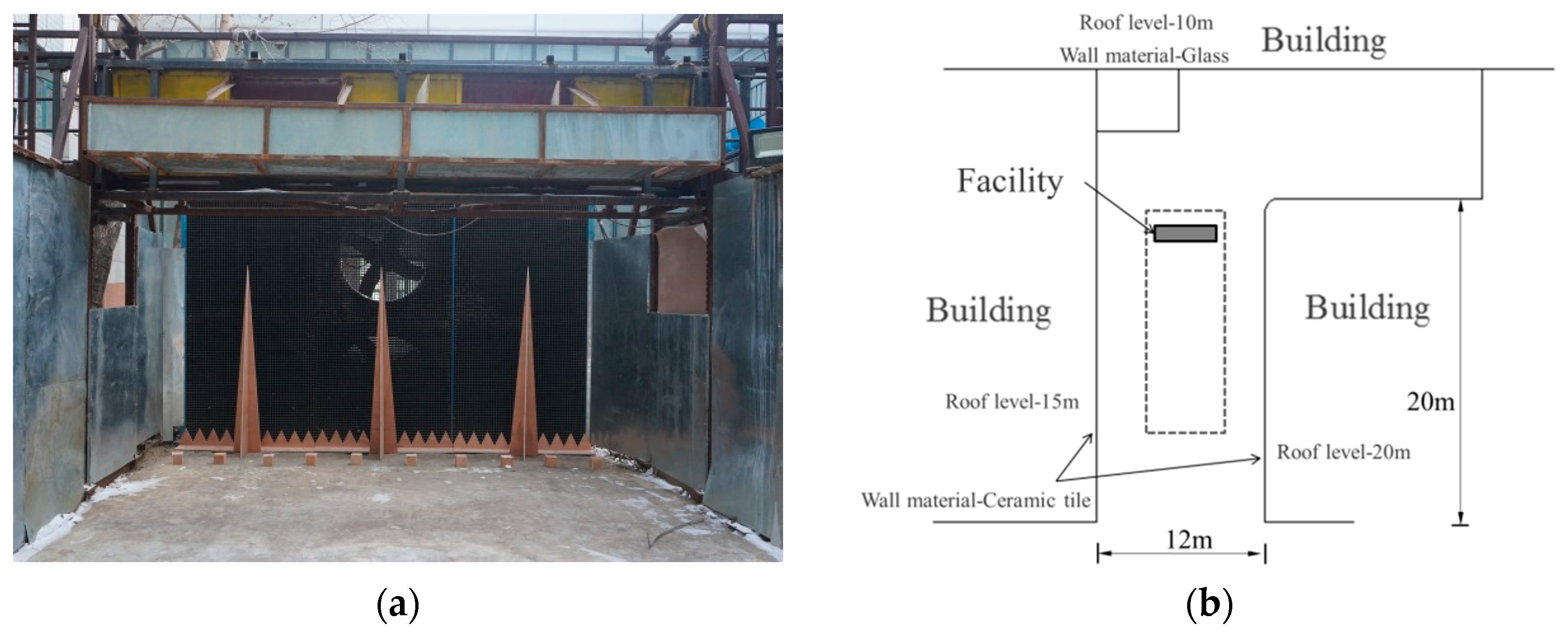
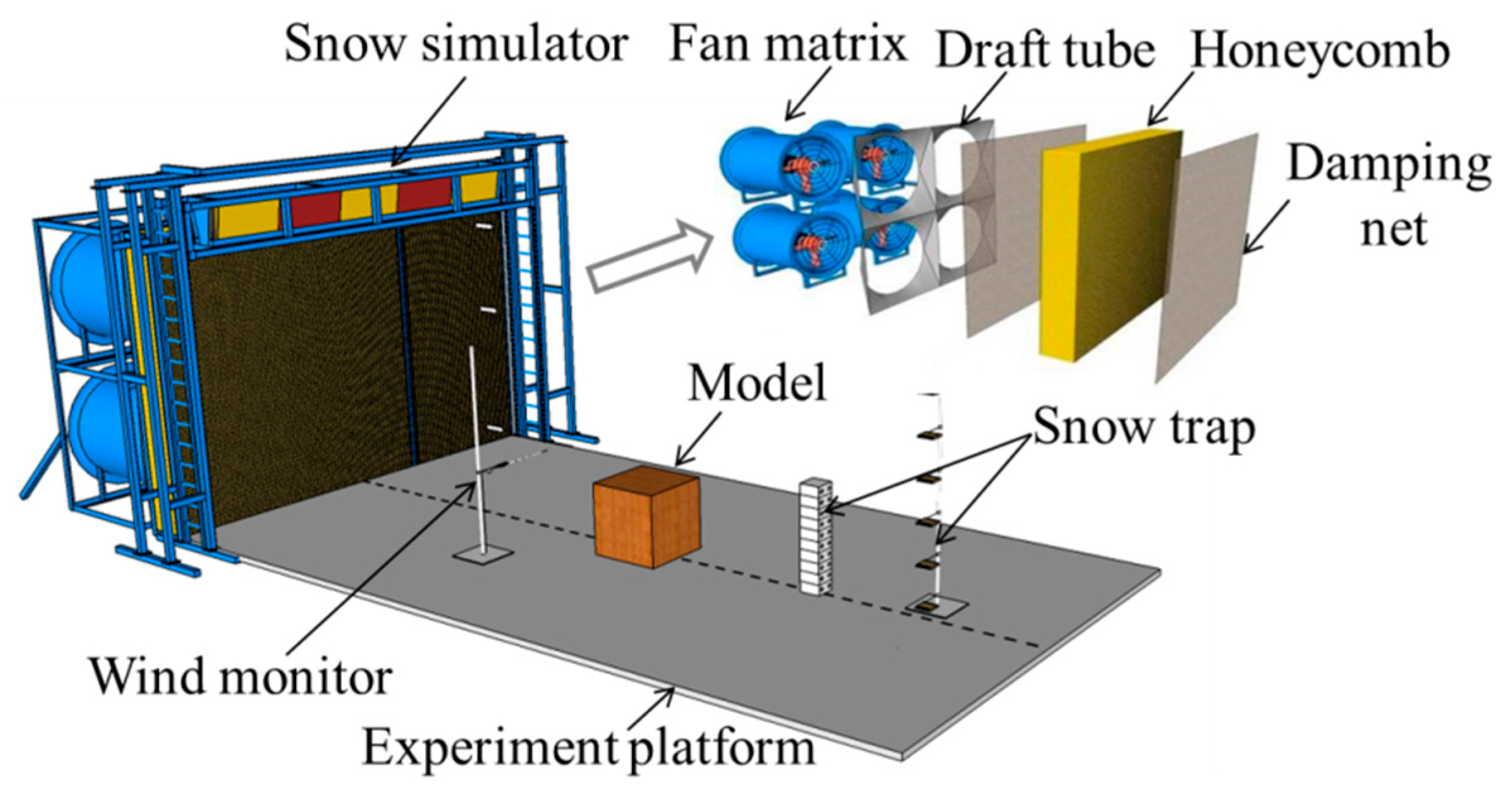

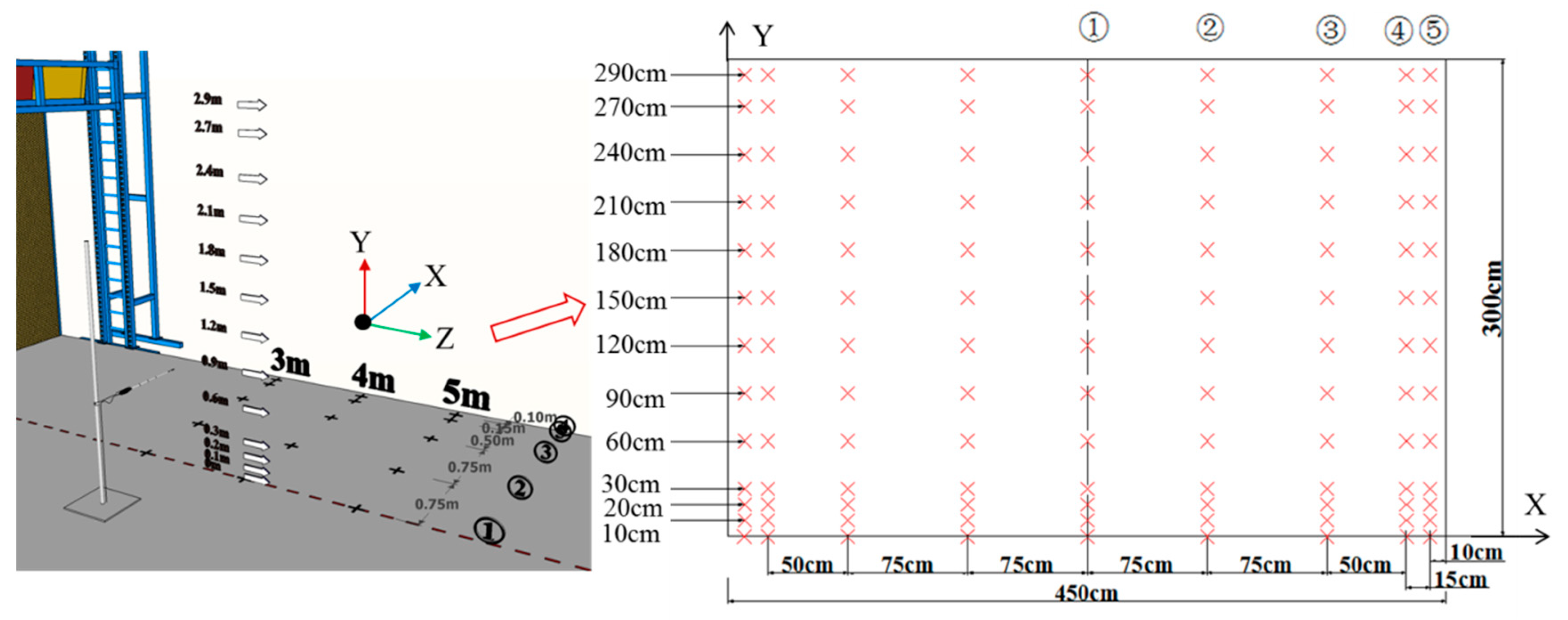

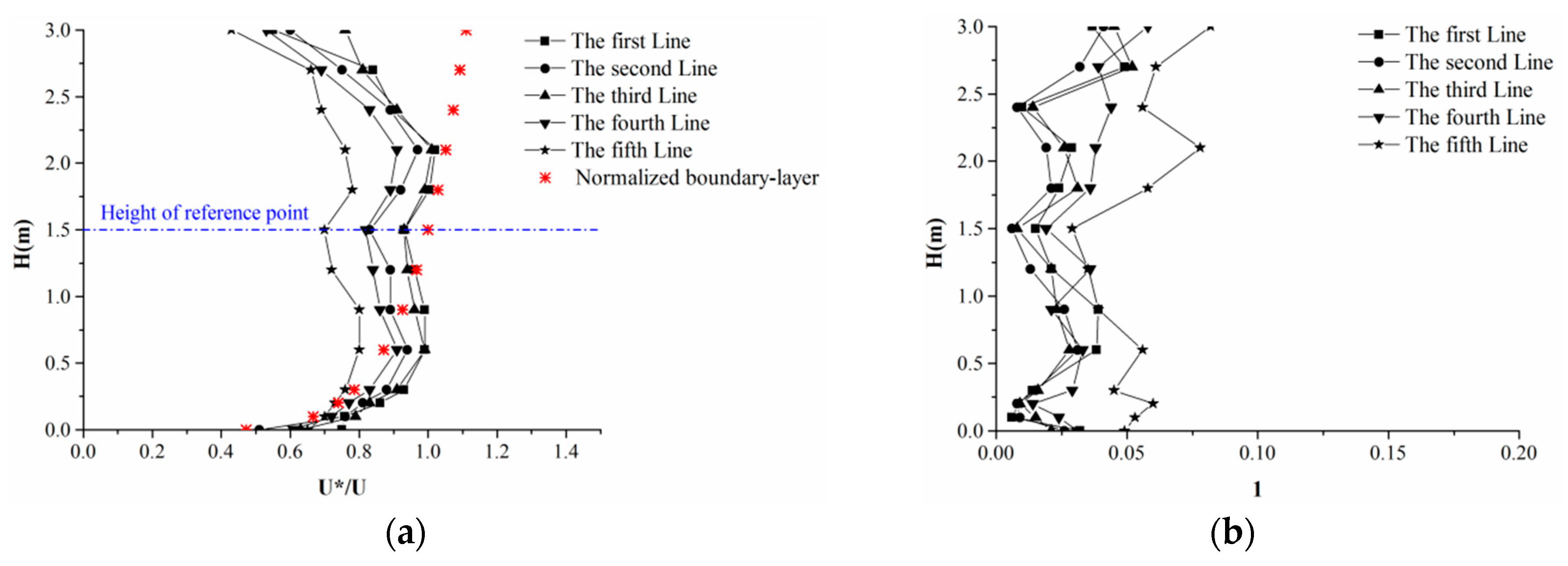
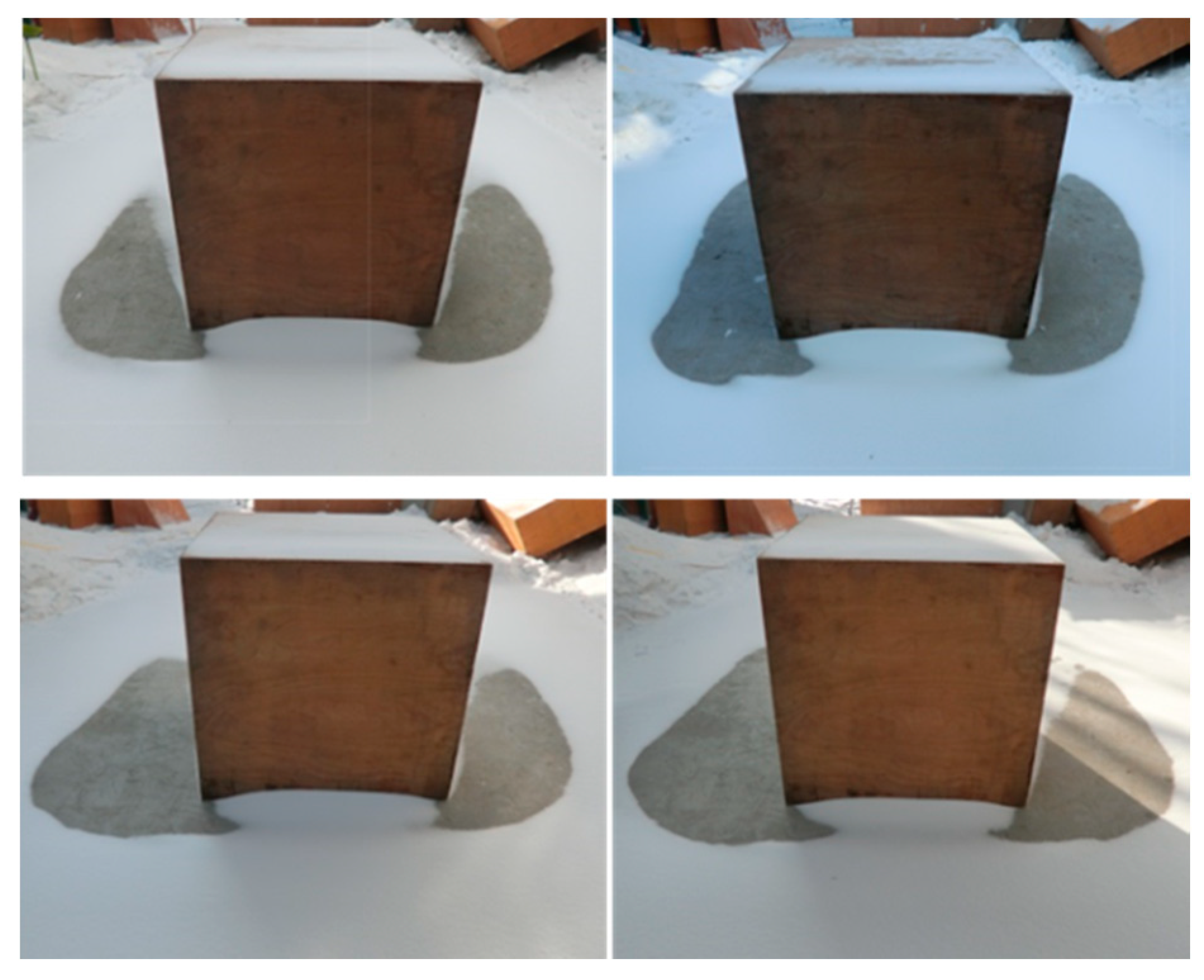
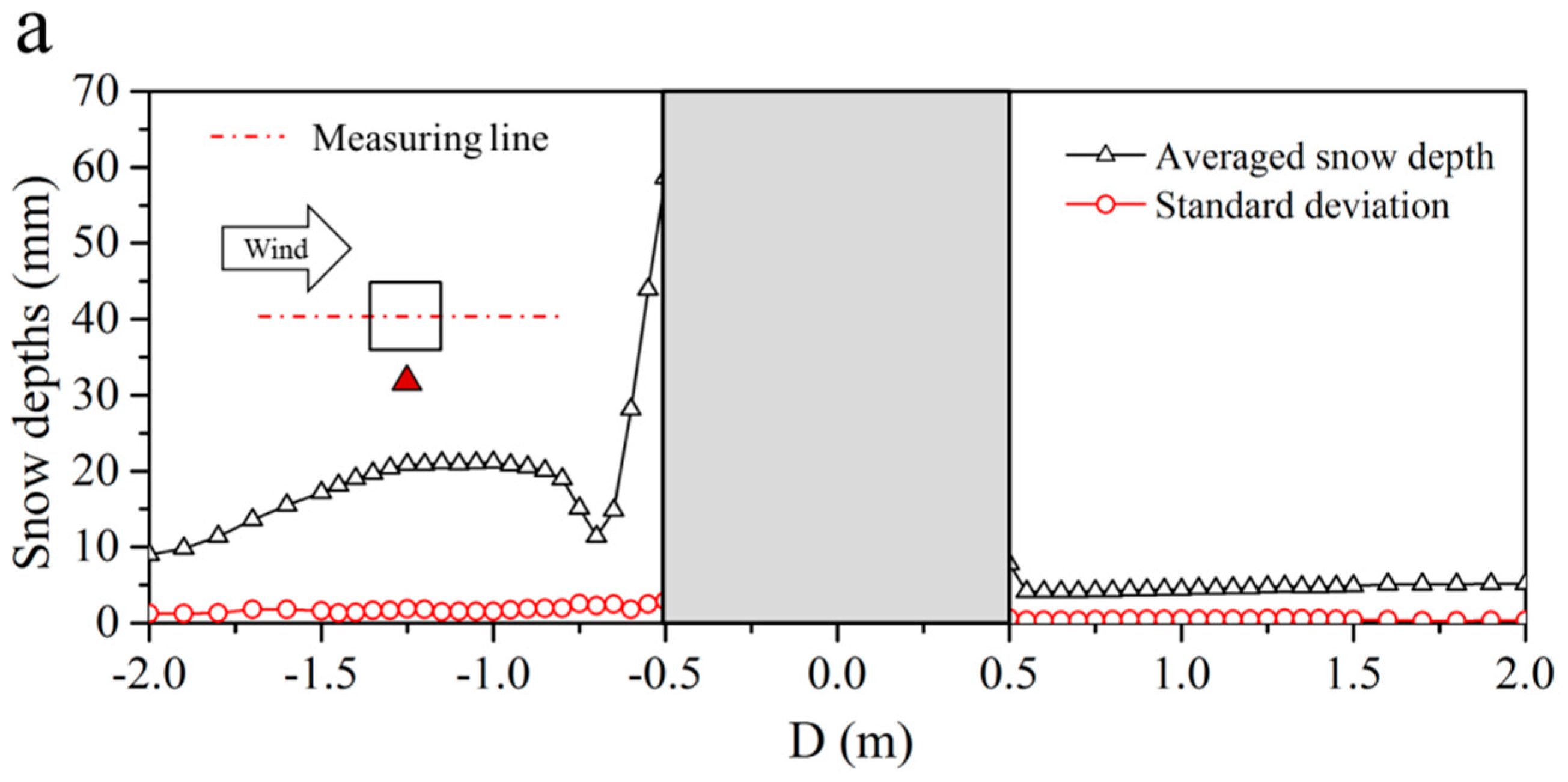
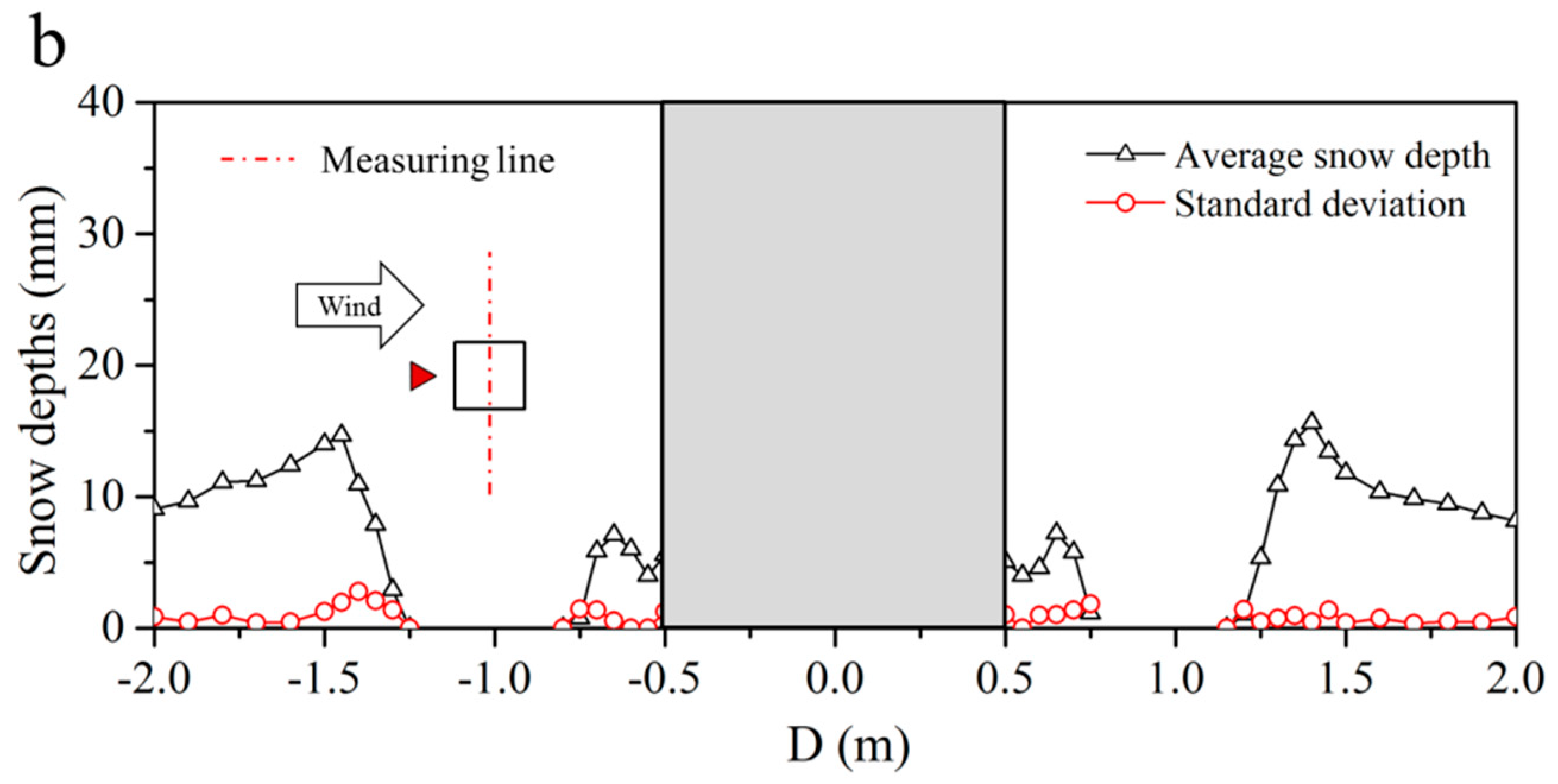

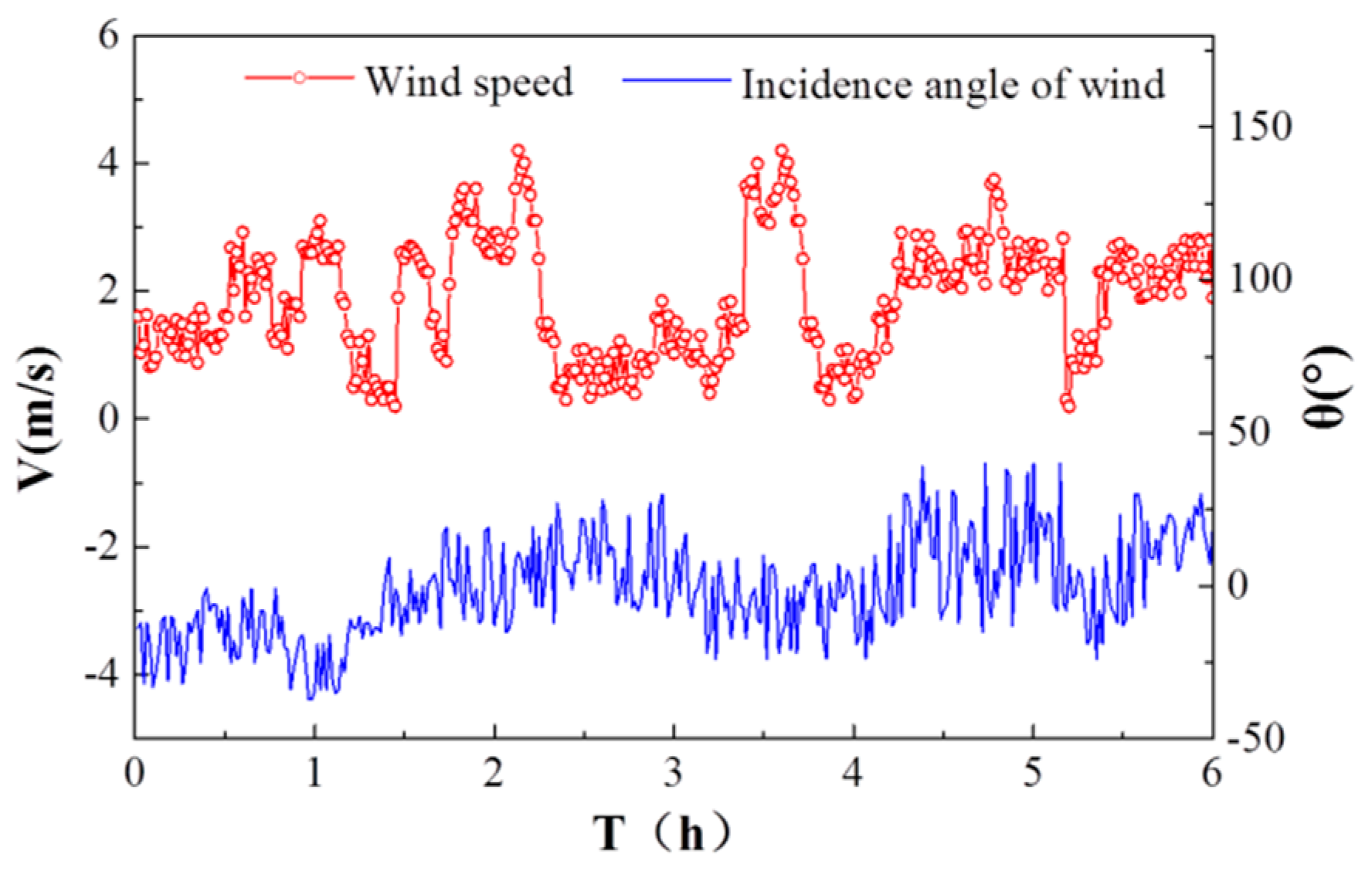
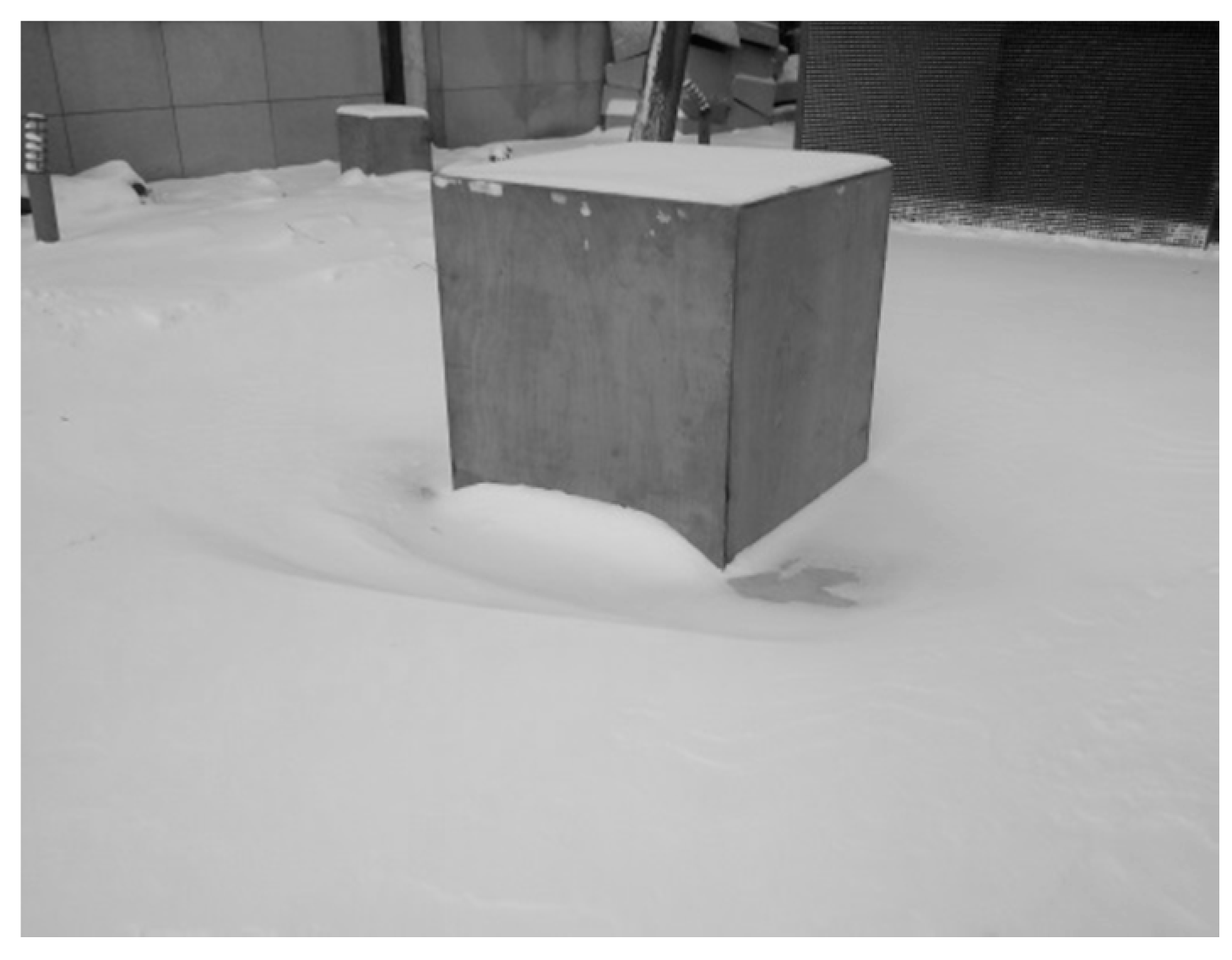

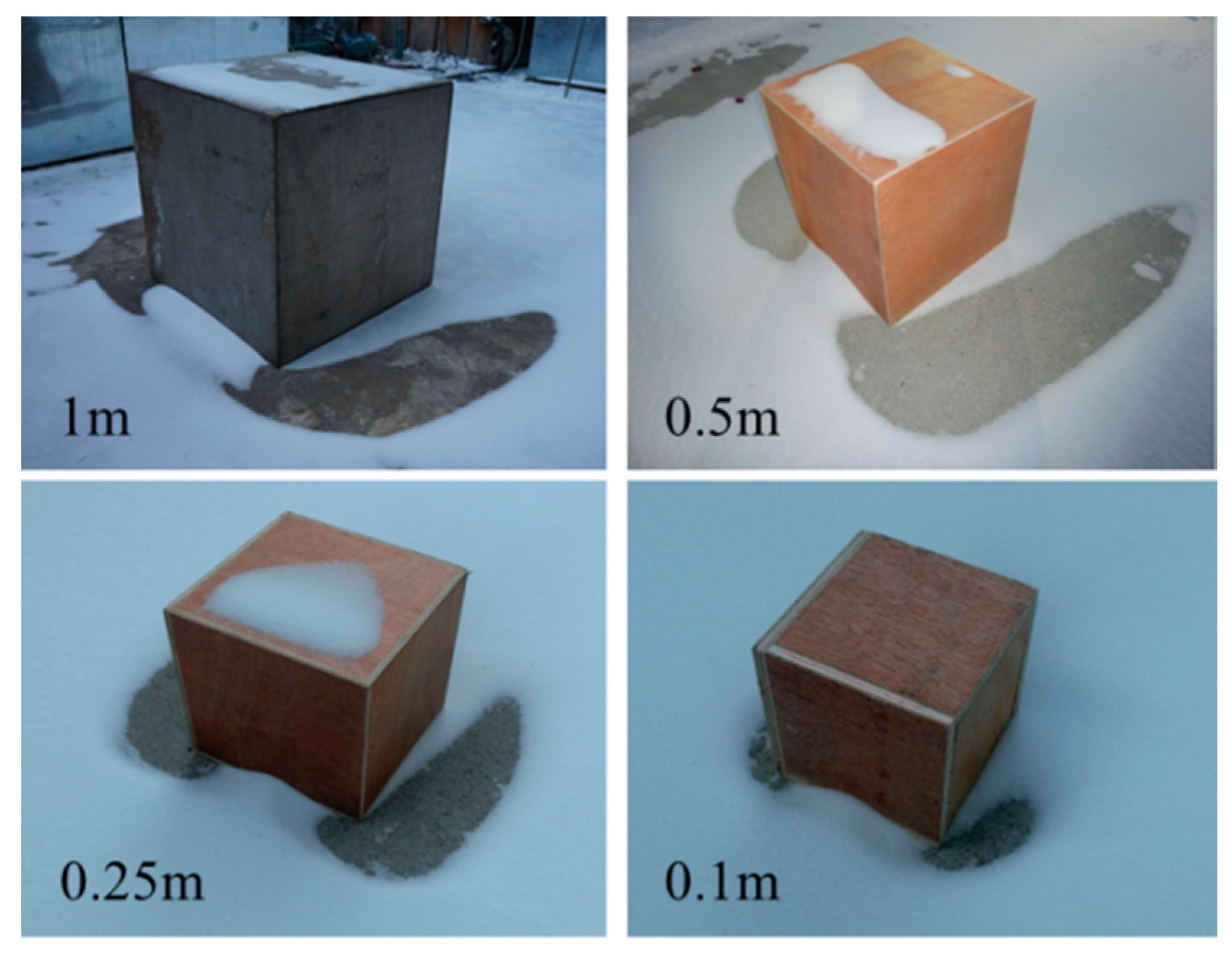
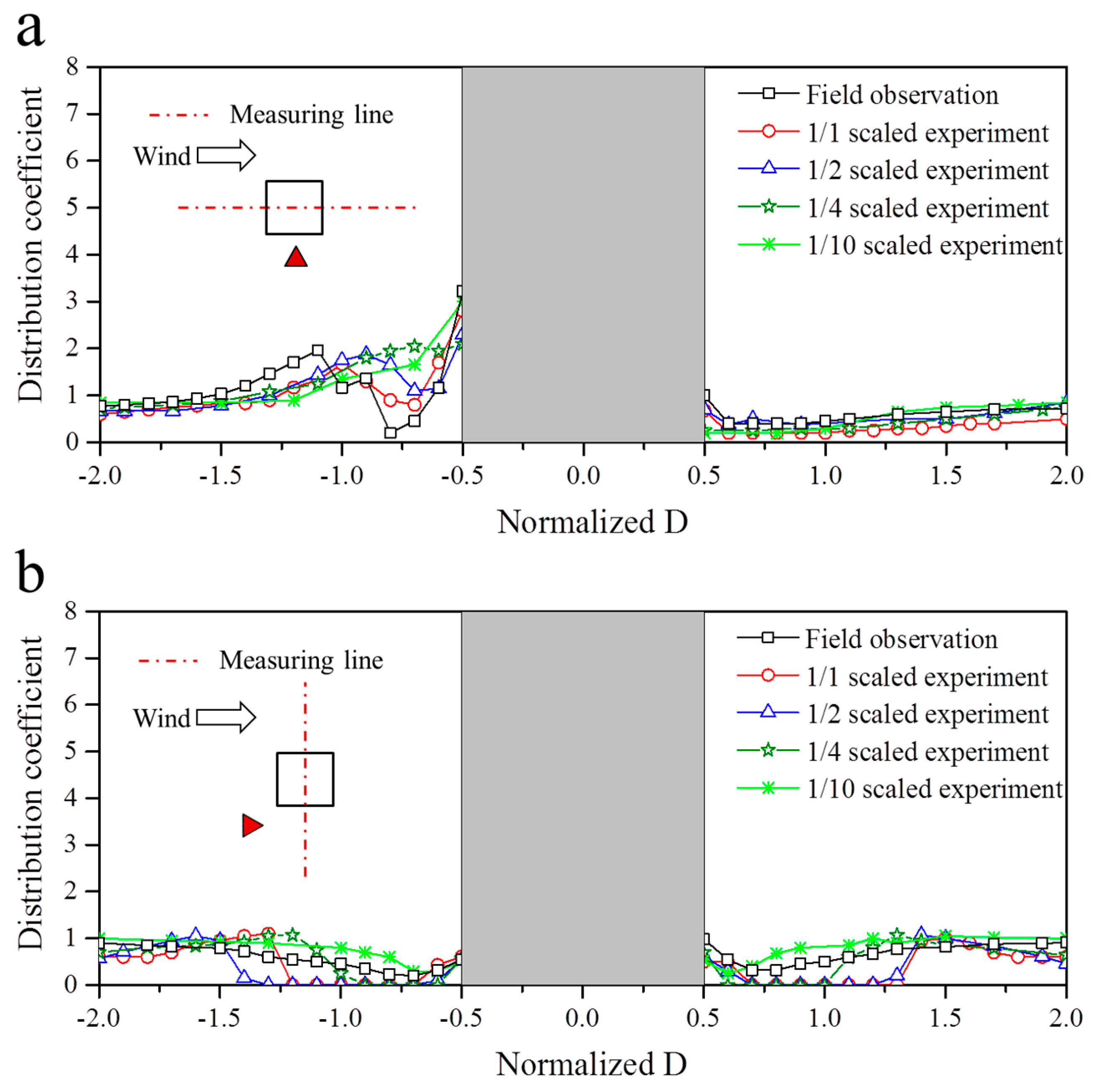
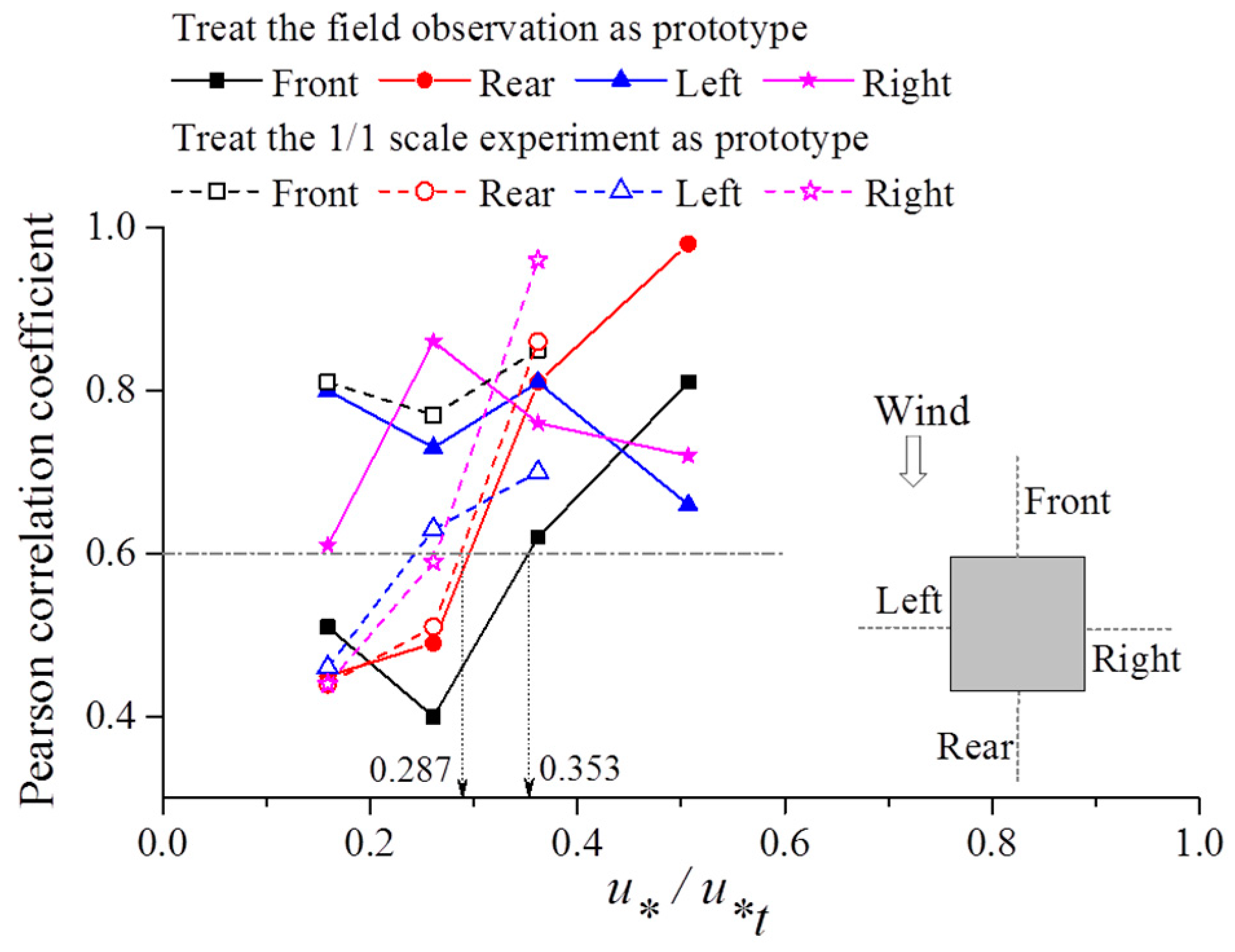
| Reference | Density (kg/m3) | Terminal Velocity (m/s) | Diameter (mm) | Angle of Repose (°) |
|---|---|---|---|---|
| Field observation of fresh snow in this paper | 100~150 | 0.30 | 0.15~1.0 | 65 |
| Stored snow in this paper | 220~310 | 0.50 | 0.2~0.5 | 55 |
| Thiis and Ramberg [14] | 50 | 0.50 | 0.20 | — |
| Tominaga and Okaze [30] | 150 | 0.20 | 0.15 | — |
| Oikawa and Tomabechi [27] | 50~150 | 0.20 | 0.15 | 60 |
| Experiment Wind Speed | Temperature | Humidity | Max Natural Wind | Bulk Density of Snow | Testing Time |
|---|---|---|---|---|---|
| 2.5 m/s | 0 °C | 78% | 0.13 m/s | 250.6 kg/m3 | 1 h |
| 2.5 m/s | 0 °C | 78% | 0.30 m/s | 260.2 kg/m3 | 1 h |
| 2.5 m/s | −1 °C | 76% | 0.28 m/s | 255.8 kg/m3 | 1 h |
| 2.5 m/s | −1 °C | 76% | 0.19 m/s | 236.7 kg/m3 | 1 h |
| 2.5 m/s | −1 °C | 76% | 0.22 m/s | 227.5 kg/m3 | 1 h |
| 2.5 m/s | −1 °C | 76% | 0.23 m/s | 240.4 kg/m3 | 1 h |
| 2.5 m/s | −2 °C | 74% | 0.18 m/s | 266.6 kg/m3 | 1 h |
| 2.5 m/s | −2 °C | 73% | 0.15 m/s | 270.1 kg/m3 | 1 h |
| 2.5 m/s | −2 °C | 73% | 0.22 m/s | 252.4 kg/m3 | 1 h |
| 2.5 m/s | −2 °C | 68% | 0.14 m/s | 261.9 kg/m3 | 1 h |
| 2.5 m/s | −2 °C | 68% | 0.20 m/s | 242.3 kg/m3 | 1 h |
| 2.5 m/s | −2 °C | 67% | 0.30 m/s | 248.6 kg/m3 | 1 h |
| 2.5 m/s | −2 °C | 68% | 0.17 m/s | 233.6 kg/m3 | 1 h |
| 2.5 m/s | −2 °C | 66% | 0.19 m/s | 239.5 kg/m3 | 1 h |
| 2.5 m/s | −3 °C | 64% | 0.16 m/s | 257.4 kg/m3 | 1 h |
| 2.5 m/s | −3 °C | 63% | 0.11 m/s | 244.5 kg/m3 | 1 h |
| 2.5 m/s | −3 °C | 63% | 0.21 m/s | 221.0 kg/m3 | 1 h |
| 2.5 m/s | −3 °C | 61% | 0.15 m/s | 235.2 kg/m3 | 1 h |
| 2.5 m/s | −3 °C | 60% | 0.12 m/s | 243.3 kg/m3 | 1 h |
| 2.5 m/s | −3 °C | 60% | 0.12 m/s | 266.4 kg/m3 | 1 h |
| Model Scale | Velocity (m/s) | Snow Mass Flux (kg/m2·s) | Experiment Time (min) |
|---|---|---|---|
| Prototype | 2.475 | 1.93 × 10−3 | 360 |
| 1 | 3.5 | 2.81 × 10−2 | 50 |
| 0.5 | 2.5 | 1.52 × 10−2 | 46 |
| 0.25 | 1.8 | 8.49 × 10−3 | 41 |
| 0.1 | 1.1 | 3.68 × 10−3 | 38 |
| Similarity Parameters | Prototype | 1 | 0.5 | 0.25 | 0.1 |
|---|---|---|---|---|---|
| 0.002 | 0.003 | 0.006 | 0.012 | 0.03 | |
| 0.0116 | 0.0154 | 0.0154 | 0.0154 | 0.0154 | |
| 2.32 × 10−5 | 4.61 × 10−5 | 9.23 × 10−5 | 1.85 × 10−4 | 4.61 × 10−4 | |
| 0.121 | 0.143 | 0.200 | 0.278 | 0.455 | |
| 0.717 | 0.507 | 0.362 | 0.261 | 0.159 | |
| - | 99.92 | 99.92 | 99.92 | 99.92 |
© 2019 by the authors. Licensee MDPI, Basel, Switzerland. This article is an open access article distributed under the terms and conditions of the Creative Commons Attribution (CC BY) license (http://creativecommons.org/licenses/by/4.0/).
Share and Cite
Liu, M.; Zhang, Q.; Fan, F.; Shen, S. Modeling of the Snowdrift in Cold Regions: Introduction and Evaluation of a New Approach. Appl. Sci. 2019, 9, 3393. https://doi.org/10.3390/app9163393
Liu M, Zhang Q, Fan F, Shen S. Modeling of the Snowdrift in Cold Regions: Introduction and Evaluation of a New Approach. Applied Sciences. 2019; 9(16):3393. https://doi.org/10.3390/app9163393
Chicago/Turabian StyleLiu, Mengmeng, Qingwen Zhang, Feng Fan, and Shizhao Shen. 2019. "Modeling of the Snowdrift in Cold Regions: Introduction and Evaluation of a New Approach" Applied Sciences 9, no. 16: 3393. https://doi.org/10.3390/app9163393
APA StyleLiu, M., Zhang, Q., Fan, F., & Shen, S. (2019). Modeling of the Snowdrift in Cold Regions: Introduction and Evaluation of a New Approach. Applied Sciences, 9(16), 3393. https://doi.org/10.3390/app9163393




